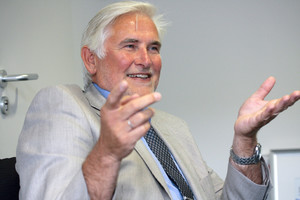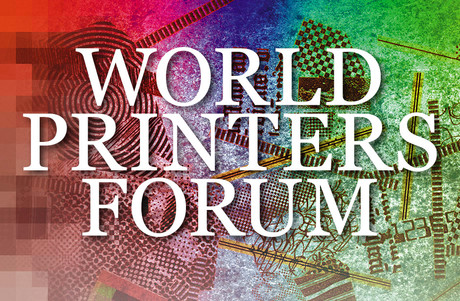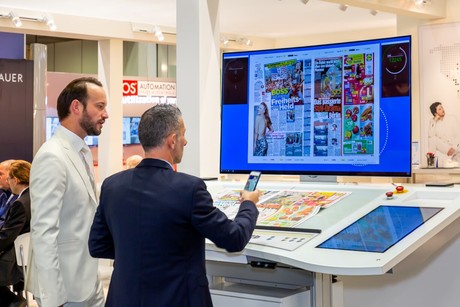In Münster, the 30-year-old war, which devastated Central Europe and had killed nearly half the population, was ended. A war, which was led by the powers of the time under religious flags and also with the aid of the then new media. Because printing technology had changed everything.
The extremely polemic flyers appeared mostly anonymous. Since the Emperor was at war with the Protestant princes, there were sufficient grievances which could be denounced. Only about the counterfeiters, which enriched since 1620, in about a few years around 100 flyers with a total circulation of 125,000 copies were brought under the people. When the war ended in 1648, there were already about 50 newspapers in the country.
The media company
Today, Münster is an important media center in Germany. The Aschendorff group is among the top 20 publishers in Germany. The company emerged from the almost 300-year-old family business Aschendorff Verlag. The main products of the company group are daily newspapers (Westfälische Nachrichten, Ahlener Zeitung, daily newspaper for the district of Steinfurt, Münstersche Zeitung / Grevener Zeitung), free newspapers, digital media and magazines. Aschendorff is now owner-managed in the ninth generation.
During my visit in August 2016, I was able to speak with the managing director Thilo Grickschat, technical director Thomas Wenge and Detlef Wiedenhöft, responsible for production coordination. While in some places industry is complaining about falling and missing orders, this round was dominated by the pure upbeat mood.
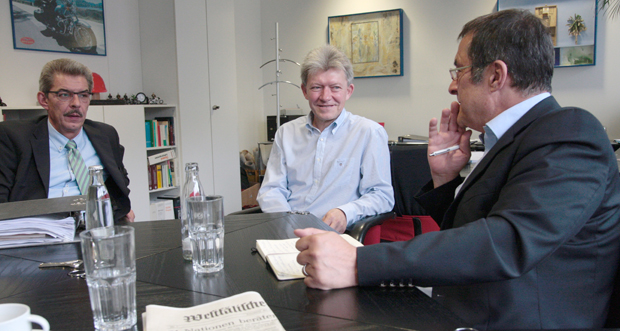 Thomas Wenge, Detlef Wiedenhöft, Manfred Werfel (from left to right), photo: Silvia Werfel
Thomas Wenge, Detlef Wiedenhöft, Manfred Werfel (from left to right), photo: Silvia Werfel
Over the past few years, the production company of the media company has developed into the dominant printing center, which is active in and even outside the region. The concept is: We want to be among the winners in a consolidating market. For example, the number of advertising inserts is growing strongly and has increased by 30% in the last year alone.
The print center produces 28 different newspaper titles per night with a daily total circulation of approximately 250,000. One million printing plates are produced each year. The average circulation per print run is 8,500 copies. Printed on seven days a week, at night and on workdays one works in three-shift operation.
New press
The fact that flexible and automated machines are required for such a complex structure is easy to understand.
Therefore the machine park was expanded by a new printing machine in 2016. Due to the shorter set-up times, the highly automated and flexible 32-page press can print the small-part newspaper titles in the night production by means of automatic plate changing modules. The high quality and performance potential with up to 50,000 four-color newspapers per hour can also be used for high-quality products with high print runs. The compact 4-high tower press with two reel stands, two H-type printing towers and a folding unit is designed for a maximum paper web width of 1,400 mm and a cylinder circumference of 1,020 mm.
The KBA Commander CL consists of two 4-high towers for 4/4-printing, a jaw folder and two reel stands with unpacking station and reel loading. An automation package consisting of automatic roller locks, inking units and cylinder washers, fanout, color measurement and control systems, color and cut-off register controls and fully automated plate changing systems reduces set-up times, waste, operating and maintenance costs. A quality management system supports high print quality. For in-line finishing, facilities for special advertising formats such as glued “Super Panorama” (double-truck pages) and “Half-Cover” are installed.
With the start of the new press one is highly satisfied. For Thomas Wenge this was the 8th commissioning and never before ran everything as smoothly as this time. In January 2016 began the set-up and already in May the machine could go into operation.
Why is quality so important?
“We are bringing the cup to Germany,” the Quality Team of the Aschendorff printing center in Münster had confidently proclaimed in the run-up to the seventh participation in the International Newspaper Color Quality Club (INCQC) competition. What the German footballers failed at the European Championships reached the newspaper printers in Münster.
By re-joining the International Newspaper Color Quality Club in 2016, the Aschendorff Printing Center is now at the top of the list of currently 36 members of the WAN-IFRA “Star Club”. Already seven times the printing center became a member of the International Newspaper Color Quality Club (INCQC). There are also three successful certifications of print quality by WAN-IFRA and three successful certifications by the VDM and Fogra.
The challenge for the printing center, which had again competed with the flagship newspaper title “Westfälische Nachrichten” as in the previous years, was particularly great, because instead of the Wifag press, which had been successfully used for many years, the newly installed KBA Commander CL had to be used for the competition. And this, although the finetuning was not yet finished at this time.
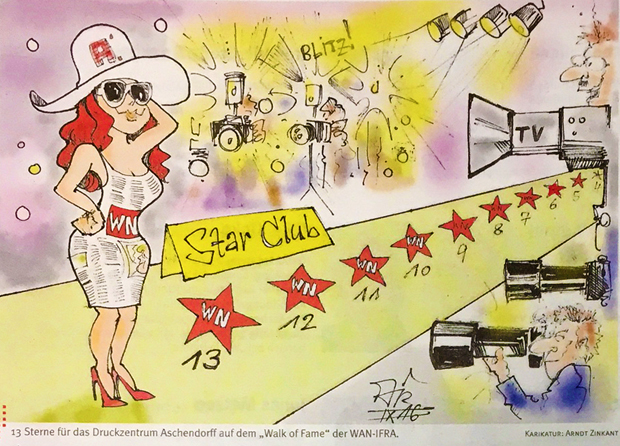 A cartoon in the house magazine deals with reaching the first position in the “Star Club”, Aschendorff INTERN, 30.9.2016
A cartoon in the house magazine deals with reaching the first position in the “Star Club”, Aschendorff INTERN, 30.9.2016
Since 2002 the Aschendorff printing center has been a member of the INCQC and regularly meets international standards. Detlef Wiedenhöft, the production coordinator at the end of 2016, was present from the outset, has led the projects “Quality Club” and “Quality Certification” several times. End of 2016 he retired after many years. Thomas Wenge, Technical Operations Manager, was responsible for the participation in the competition.
The long-term commitment to consistently high print quality is by no means a nice end in itself, but part of the business strategy. “We do this every day,” says Thomas Wenge, who is committed to industrial print production. “This is not about ‘the art of printing’ but about high-quality industrial newspaper production. The result and experience gained directly benefit our customers”. Wenge also talks much more about a “printing factory” than a printing company. He is concerned with the industrially standardized high-quality production process as opposed to craftsmanship from the preindustrial past.
Competition and inclusion in the International Newspaper Color Quality Club help the colleagues of the printing center to always be at the forefront in the further development of standards and print quality. “In order to pass the certification, we are constantly challenging ourselves and our workflow and production processes and are taking on new impetus,” explains Ralf Lünebrink, press manager. Quality management is also used to detect and eliminate weak points. By thinking in standards deviations are identified and corrected early.
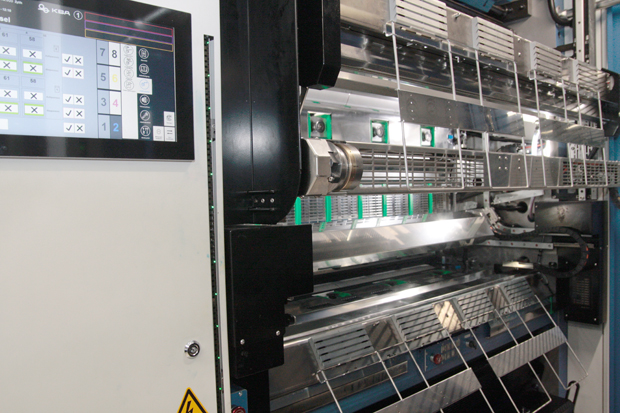 The Commander CL offers automatic plate changing at all positions in just minutes, Photo: Silvia Werfel
The Commander CL offers automatic plate changing at all positions in just minutes, Photo: Silvia Werfel
Also the motivation of employees is of major importance. Their interest in quality standards is aroused and pressmen are sensitized to customer requirements. Ultimately, the focus is on the customer. Their expectations can be determined on the basis of systematic quality work and transferred to production. Communication with the customers is objectivized on the basis of clearly defined quality criteria and misunderstandings thereby avoided.
The International Newspaper Color Quality Club, which has been set up every two years since 1994, is the only international print quality competition for newspapers. Contrary to many other competitions, the INCQC uses objective criteria, international ISO standards and clearly defined methods. One reason for the high reputation of this competition among printers.
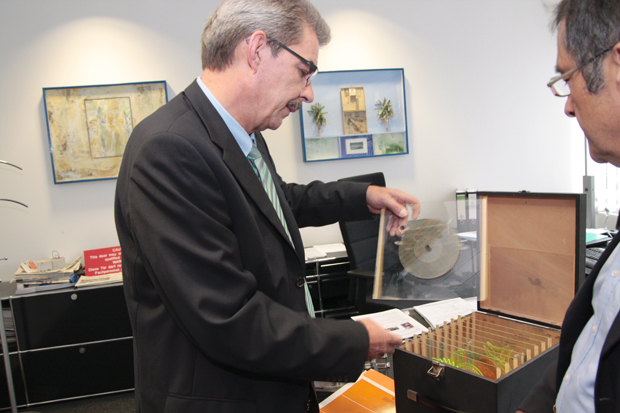 Thomas Wenge shows technical models, which demonstrate interdependencies vividly, Photo: Silvia Werfel
Thomas Wenge shows technical models, which demonstrate interdependencies vividly, Photo: Silvia Werfel
Colorimetric measuring techniques are used to measure specific test elements (cuboid) printed during daily production. In addition, an international jury assesses the general print quality of submitted newspapers. A complex point system determines at the end whether the participating publishers and printers meet the required standards or not.
Altogether 128 participants from all over the world were counted this time. 86 newspaper titles, printed by 65 printers from 26 countries, were included in the INCQC for two years in 2016.
Investing in the future
The preparation and planning of the 2016 press extension had been prepared over five years in advance. It was necessary to have an installation which corresponded to the ideas of the management through an industrial and largely automated printing process for the production of high quality newspaper products. At the same time, the new production system required sufficient flexibility to produce more small-scale products.
With the integration of the new press into production, an important milestone was achieved. But the economic and technical growth of the printing center Aschendorff is by no means finished. Already now, shortly after the commissioning of the new press, the expansion of mailroom and printing department until the year 2020 will be discussed with the publishers. The development of the “Printing Factory” continues – with investments in the future.
Manfred Werfel, WAN-IFRA Deputy CEO

